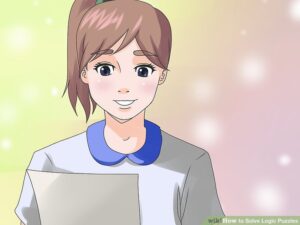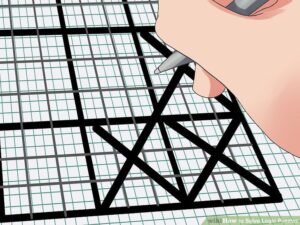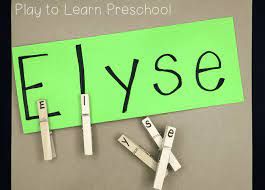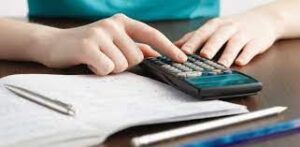
Puzzles for kids
How to solve logic puzzles for kids?
puzzles for kids, This article offers both broad guidelines for logical reasoning issues and instructions for resolving the most prevalent kind of logic dilemma. This kind of problem gives you a list or a paragraph of clues before asking you a question that you must answer using the clues. This article offers directions for creating your own grid, but many books and websites that feature these logic problems also include a grid to aid in solving them.
This article offers directions for creating your own grid, but many books and websites that feature these logic problems also include a grid to aid in solving them. Read more…
Building a Grid

Use this approach to solve logic puzzles that require you to combine different categories. These frequently include a description or a list of details that describe a group of individuals, a home, or other things. The question typically asks you to pair up two categories or states. The order in which various groups are arranged. This kind of puzzle is seen in many books and websites that offer collections of logic puzzles.
Here’s an illustration of an issue: To bring a dessert to a birthday party, three pals named Anna, Brad, and Caroline agree to bring one each. Each of the friends is donning a unique colored shirt. Anna’s clothing is blue. Today, the person who delivered brownies was unable to locate her red shirt. Brad brought absolutely no dessert, which annoyed the individual with the yellow shirt. Read more…
• The example question, as with many logic games of this kind, requires you to pair together two categories. Although you initially know the names of multiple people and a number of sweets, you are unsure of who delivered which dessert. You need to match each person to a dish using the description’s hints in order to determine who provided the ice cream. In fact, the third category—shirt color—should assist you in finding the solution.
If the puzzle already has a grid set up.
- Note: skip to Using a Grid. If your logic challenge does not suit this description, move on to Solving Other Logic Puzzles.

for kids
2. Carefully read the puzzle and compile a list of the essential details. In some cases, the problem will already provide you with a list of the names, colors, or other essential details. You’ll frequently need to thoroughly understand the puzzle and create multiple lists on your own. Watch for the term “each” because it frequently indicates which categories are crucial. You require a list of people and a list of desserts if you say, for example, “Each person brought a different dessert.”
- Make separate lists for each item. Whenever a name appears in the puzzle, add it to a list of names. Add each color that appears in the problem to its own list of colors.
When you’ve finished, each list should include the same number of things. Check the puzzle carefully for additional things if a list is too short.
• In some challenging problems, you’ll get indications about what someone is missing, such as “Brad didn’t bake a dessert.” The dessert list should be made the same length as the other lists in this example by adding “none” to the end.
3. List each item you noted down on a piece of graph paper. Write a vertical column on the left-hand side of the paper, with a line for each thing you listed. Keep every list together, and draw a thick line to demarcate them.
4 •Let’s imagine, for illustration, that you have three lists. Names: Anna, Brad, and Caroline; desserts: brownies and ice cream; no dessert; and shirt color: red blue, and yellow Make a vertical list in the following order: Draw a thick line through Anna, Brad, Caroline, brownies, ice cream, none, (draw a thick line here), red, blue, and yellow.

5 • Create a grid. To make the grid on your graph paper apparent, draw lines with a pen or pencil. There should be a row for each word on the left and a column for each word at the top. Make the broad lines separating the lists span the entire grid, keeping them noticeably thicker and more conspicuous than the other lines.

To create a unique puzzle
Yes, you could head out and purchase a puzzle from a toy shop. But since making your own puzzles at home is so simple, why spend money on one? Children can pick or create whatever pattern they like for do-it-yourself puzzles, which are inexpensive and entertaining to make. This personalised puzzle is a fantastic way to encourage your child’s creativity, and you may do it again and again because the designs and problems that result are limitless! This DIY puzzle is a terrific place to start, whether you’re organising birthday party activities or simply want to involve your child in an arts and crafts project.
Create a unique sketchbook

Create a unique sketchbook
Young children like drawing, but sketchbooks from the store can be pricey. Get inventive and assist your child in creating her own special sketchbook to be filled with vibrant sketches, imaginative images, and sparkling doodles.
Your child’s fine motor skills will improve as a result of this simplified book-making activity, which will also teach her about English print traditions and encourage aesthetic growth. For a fantastic environmental awareness lesson, use recycled materials like old cereal boxes and scratch paper. Read more…
Create a Name Puzzle

The kings and queens of scribbling scrabble are preschoolers. All that scribbling indicates that toddlers are beginning to realise that written letters have meaning, even though their “words” still don’t entirely make sense. Educating your youngster about the importance of letters will help them go to the next level.
How to play Sudoku puzzles for kids?
Simple Sudoku Guidelines for Children
Children of all ages can effectively complete and enjoy the Japanese number puzzle called Sudoku. Participating in these puzzles to solve improves kids’ math, logic, and critical thinking abilities, according to Math and Reading Help in “Sudoku: a Logic-Based Educational Puzzle for Kids.” Children can enjoy this brain-stretching game since puzzles come in different levels of complexity. Beginners can find puzzles that employ simply the numbers 1 through 4 or 1 through 6 in grids of 4 by 4 or 6 by 6 pieces, respectively.
Select a row that has a few numbers in it. There will already be specific numbers in each grid, which will assist you in completing the puzzle. Consider one row where one or more of the numbers have previously been solved, and consider what numbers might possibly fit in the empty boxes. You’ll need more hints to determine which number fits in each box, but for example, if a row has the numbers 2 and 3 in place, the empty boxes would be 1 and 4. Read more…

Earn the necessities. The objective of a normal Sudoku puzzle is to insert the numbers 1 through 9 correctly in each row, column, and box on a 9-by-9 grid. None of the nine numbers is used more than once.
To correctly position the numbers, use the hints in the columns. Look at the column that the empty box you are concentrating on intersects with. If a number choice is present in that column already. It is eliminated because it can be repeated. If it were entire.
For each row, repeat this process. Sometimes it’s necessary to go on to another region and return to a row once some missing numbers have been found. Players might not be able to fill in every row right away.
Repeat the process after all the rows have been filled out, looking at the columns for any missing numbers and using the rows and boxes as hints. Then, utilise the numbers in the rows and columns to help you discover any missing numbers in the boxes. Read more…
How to Create a 3×3 Grid for Math Problems?

Math worksheets with grids, resemble sizable straight squares with a column of numbers going down. And a row of numbers going across is given out by math teachers. A mathematical procedure. Such as an “x” for multiplication or a “+” for addition, may be seen. Where the column and row overlap. Instruct the student on how to divide the numbers in the column by the numbers in the row. Because the shaded region with the printed numbers (the numbers you will multiply or add together) does not always count as part of the grid.
Row 1
Look at the intersection of the column and row at the top left corner of the symbol. You would multiply the numbers in the column by the numbers in the row. For instance, if there was an “x” in the top left corner. Take this example: the row across reads 4, 5, 6, while the column going down reads 1, 2, 3. Work the chart from top to bottom, left to right. You should complete the top row before working on the second or third row.
Add the results of the division of the first number in the row by the first number in the column. You would enter “4” in the top left box since 1 x 4 equals 4.
The first number in the column will be multiplied by the third number in the row. You would enter “6” in the top right slot on the top row since 1 x 6 equals 6. Read more…
Row 2
Divide the figures for the first number in the row by the second number in the column. You would enter “8” in the relevant field since 2 + 4 = 8.
The second number in the column should be multiplied by the second number in the row. You would enter “10” in the appropriate field since 2 x 5 equals 10.
Row 3
The third number in the column’s numbers should be multiplied by the first number in the row. 3 + 4 Equals 12, thus you would type “12” in the relevant box.
The third number in the column’s numbers is multiplied by the second number in the row. You would enter “15” in the appropriate field because 3 x 5 equals 15.
Add the third number in the column and the third number in the row together. You would enter “18” in the relevant area because 3 x 6 equals 18. Now your 3 × 3 grid finish.
puzzles require what skills for kids?
When caregivers use puzzle play time strategically, it may also be an opportunity to develop social, emotional, and language skills in addition to cognitive and fine motor skills. Here are five lessons kids pick up from playing with puzzles:
Five Benefits of Puzzle Play for Kids
So, A traditional toy for young children is a puzzle. They are also available in a range of styles, substances, and levels of difficulty. However, Even young children can experiment with simple two-piece puzzles. There are puzzles available that challenge kids as they become older and get more challenging. So, We perform numerous regular activities in life that resemble puzzles. Read more…
Spatial vocabulary: When teaching kids how to put puzzle pieces together, use words like turn, flip, and rotate. When children describe how puzzle pieces are arranged in relation to one another. They are also learning words like above, below, and besides.
Sequencing: For some puzzles, the order in which the components are assembled is crucial. Ordinal numerals and words that denote relative position in a sequence spoken to and learned by children.
Children learn to analyse a situation and come up with a solution as they put the puzzle pieces together. They might need to have the ability to put the puzzle piece they want to use aside while they look for one that will fit in the right place. As they solve a puzzle repeatedly, they could also discover that there are other ways to solve it.
Task completion and perseverance: When a puzzle is in together. The process of doing so comes to a conclusion. When a challenge is difficult for them to solve, children become frustrated, and when they overcome these feelings, they succeed in completing the assignment.
First of all, puzzles provide your youngster the chance to practice solving problems through trial and error.
In addition, puzzles are excellent for teaching kids how to persevere in the face of adversity. The only “games” that aren’t complete. Or won by cheating are puzzles in reality. There is no way to outsmart your opponent or force the pieces to fit if they don’t belong together.
Increase Hand-Eye Coordination
Your youngster may give their fine motor skills a great workout by flipping, twisting, moving, and manipulating the pieces.
Your youngster will have the chance to practice these fine motor skills while looking for a piece, picking it up, looking for its right position, and fitting it into the puzzle.
Boost Memory and Intellectual Skills
• Assist them in solving a difficult puzzle. Even though they shouldn’t be overly challenging to put together. The challenge level is sighting raised. If you attempt to solve a problem using them.
• Request that they design their own puzzle. What youngster wouldn’t enjoy solving a puzzle they created themselves?
• He was more enthusiastic about assembling the puzzle than I’ve ever seen him be with any other.
Puzzles are ideal for assisting your child in the development of important cognitive abilities, especially in preschoolers.
As they grow older and start school. They are also required to follow directions on a daily basis to complete assignments and projects. Read more…
Here are some pointers for encouraging your kids to play with and interact with puzzles:
• Check that they fit the age group. While it shouldn’t be so simple that your child could complete it while sleeping, making it too difficult could drive them to give up.
• Shapes and images that are lively, entertaining, and colorful can help interest younger children and keep their attention for longer.
• Look for puzzles that include those elements! Read more…
Tag:Puzzles for kids


